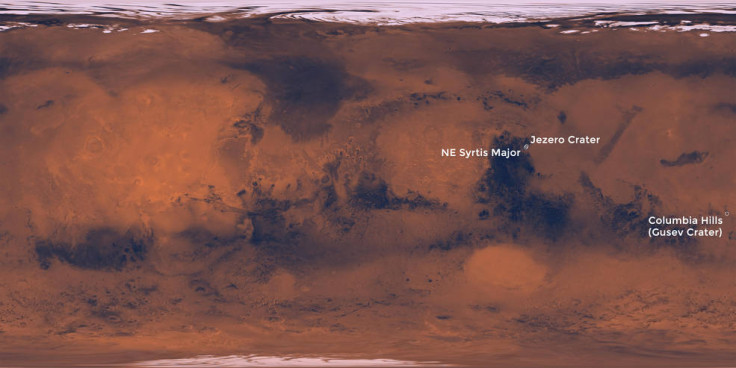Mars: Nasa scientists shortlist 3 landing sites for 2020 mission
Northeast Syrtis, Jezero crater and Columbia Hills have been picked as the landing sites.

Scientists working on the Mars 2020 mission have shortlisted three potential landing sites for the rover that includes the Northeast Syrtis, Jezero crater and Columbia Hills.
The three sites incorporate distinct geographical areas found on the red planet. The Northeast Syrtis is an ancient portion of Mars' surface, whereas the Jezero crater – once home to an ancient Martian lake – could yield the first Martian rock samples to reach Earth. Scientists believe that Columbia Hills is home to an ancient hot spring as explored by Nasa's Spirit rover.
The Mars 2020 mission is an unmanned mission by Nasa's Mars Exploration Program, slated for launch in July 2020 aboard the Atlas V 541 rocket from the Space Launch Complex at Florida. The rover, which is an automatic motor vehicle gyrating across the surface of the red planet, is expected to conduct geological assessments including the possibility of past life on Mars and natural resources and hazards for future human explorers.
A landing site is extremely important as it could take years before another mission can be sent to collect more geological samples from the red planet. The choice will therefore reflect what rocks or other geological proof is picked up on which experiments will be performed for decades.
Although the three sites have been shortlisted for now, a final choice for landing will be made a year or two before the mission's launch.
© Copyright IBTimes 2025. All rights reserved.





















